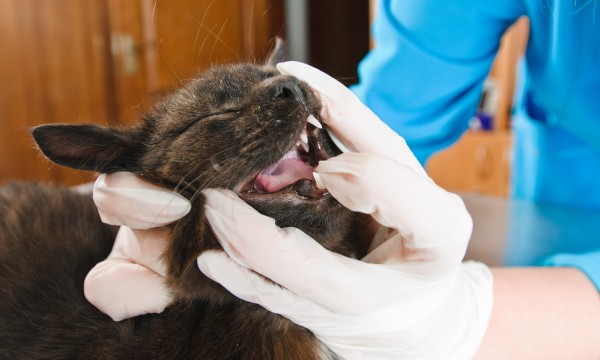As cats age, they become more and more susceptible to dental health problems. In fact, it is one of the most common issues veterinarians encounter when cats are brought in for checkups.
Common dental and oral health problems in older cats
Gingivitis
Gingivitis is an inflammation of the gums commonly seen in older cats causing soreness and ulceration if left untreated.
Periodontitis
This advanced gum disease invades the tooth socket causing inflammation, loose teeth and abscesses.
Stomatitis
This oral health problem causes inflammation usually as a result of a foreign body in your cat’s mouth like a viral disease. Your cat may find it difficult to eat and the inside of their mouth may be all red.
Rodent ulcer
This type of ulcer slowly enlarges and swells on a cat’s upper lip. It may start out looking like a yellow or pink shiny spot. If left untreated, it turns into an open sore.
Salivary cyst
This cyst occurs when salivary glands or ducts that carry saliva to the mouth are blocked.
Mouth ulcers
Mouth ulcers in an old cat’s mouth are more than just a nuisance. They may actually be a sign of feline repository or kidney disease.
What can I do for my older cat’s oral health?
Preventative care can help catch an old cat’s dental and oral health issues before they become a serious risk.
Here are a few things you can do to maintain the health of your old cat’s teeth and gums:
- Check your cat’s breath: A cat’s breath with an abnormally strong odour may mean he has digestive or gum issues (like gingivitis)
- Examine your cat’s mouth: Keep an eye out for issues like red or swollen gums, loose teeth, ulcers, pus, difficulty chewing, excessive drooling or pawing at the mouth area
- Brush your cat’s teeth regularly: You can use a cotton swab or small soft toothbrush with feline toothpaste to brush your cat’s teeth; plain salt and water can also be used
- Feed your cat a healthy protein diet: A healthy diet can affect oral health; ask your veterinarian what kinds of cat food are best for feline dental health
Tips on brushing your cat’s teeth
Yes, brushing your old cat’s teeth can help prevent dental health problems. Here are some steps to follow:
- Get your cat familiar with having their teeth brushed by massaging their gums with a cotton swab or your fingers.
- When your cat is used to your massaging, put cat brand toothpaste on your cat’s lips so they can get used to its taste.
- Next, find a toothbrush designed specifically for cats and slowly introduce it to them.
- Once your cat is ready, apply toothpaste to your cat’s teeth and brush gently.
Remember not to brush too hard. Many cats have mild gingivitis and brushing too hard can hurt their gums.








